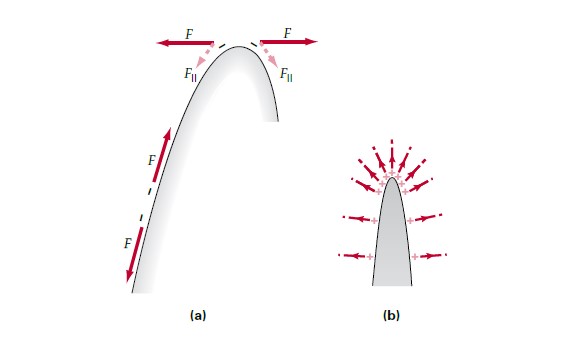Electric charge accumulates in the highly curved surface regions of the conductor – why?
To understand why most of the electric charge accumulates in the highly curved surface regions of the conductor, consider the electric forces acting between charges on the surface of the conductor. (See Figure a. below)

- Where the surface of the conductor is fairly flat, these electric forces will be directed nearly parallel to the surface.
- The charges will spread out to the sharper ends where the forces between charges are directed more nearly perpendicular to the surface.
- As a result, there will be little tendency for the charges to move parallel to the surface.
- Thus the more highly curved regions of the surface accumulate the highest concentration of charge.
An interesting incident occurs when there is a large concentration of charge on a conductor with a sharp point (Figure b above).
The electric field above the point may be high enough to ionize air molecules (to pull or push electrons off the molecules).
The freed electrons are then further accelerated by the field and can cause secondary ionizations by striking other molecules. This results in an “avalanche” of electrons, visible as a spark discharge.
